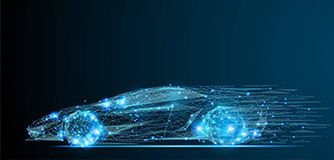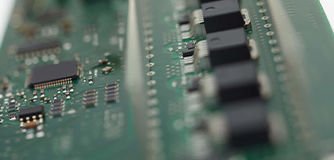The power-backbone as an optimal solution for future electromobility requirements
21. SEP 2022
The electrification of automotive powertrains, the associated use of high-voltage battery storage systems, and adapted (zonal) vehicle architectures are all changing the requirements for energy transmission within vehicles. Where the vehicle's power supply used to be for EMC reasons, there is now a high-voltage battery. Conventional, flexible round conductors are no longer the optimal solution for supplying low-voltage front-end components from the high voltage battery via a DC/DC converter.
When relocating the energy supply to the interior, costs and weight play a role, but so do electromagnetic compatibility requirements, limited installation space, and the maxim of fully automated vehicle assembly. One possible solution to cope with these requirements is power transmission through stacked rigid busbars, known as the power backbone.

Advantages of busbars
Technical development of the power backbone
The first step in our pre-development project at LEONI was to prepare a long-term vision. This served as a basis for initiating the development work and employing agile methods. Using a similar existing product and the available knowledge as a starting point, new requirements were collected and analyzed and appropriate solutions were developed. These generic solutions for the separate functions were compiled and assessed in a morphological box.

An extract from the morphological box
This allows us to offer optimized solutions to meet specific customer requirements. Essential features when devising a specific concept include material selection, sizing, and fixation and contacting technology for the power backbone. A number of generic concepts were designed to demonstrate the technical range of possible applications.
Electro-thermal, mechanical, and electromagnetic simulations were performed for designs based on predefined conditions. These concepts were also subjected to a cost assessment and a comparison with existing solutions.

Simulation results
Results and success factors
The development of the power backbone proved that it has many advantages over classic round conductors. In particular, the very low magnetic field made possible by the stacked arrangement allows installation close to the interior, without the need for additional shielding measures. Another advantage is the low height requirement, which allows integration even in tight installation spaces. The flat geometry with its better heat dissipation allows for a smaller conductor cross-section, which further reduces component weight. The stiffness of the busbars also significantly enhances the potential for automated production and assembly.
Along with the concept work, various prototypes were built over the course of the project in order to facilitate communication with the customer. Concepts for sustainable and automated production were also developed. Patents have already been filed for several innovative solutions, which represent a unique selling point for the new product from LEONI.
Thanks to the use of agile methods, we were able to establish the conditions for the inclusion of a new product in the LEONI product catalog within only 7 sprints. This means that LEONI is now ready to discuss individual solutions with customers and turn their vision into a reality.




Final product: 2 prototypes for different requirement scenarios
With its many advantages and improvements over conventional round conductors, the power backbone is proving to be an intelligent alternative: the LEONI power backbone is ready for the road, and even more attractive thanks to ongoing enhancements.

AUTHOR
Dr. Matthias Korte
Head of Ideation, Strategy & Intellectual Property, LEONI Bordnetz-Systeme GmbH
Do you have a question?
We’ll be glad to help. We look forward to hearing from you.
Phone +49 9321 304-0
E-mail blog@leoni.com







